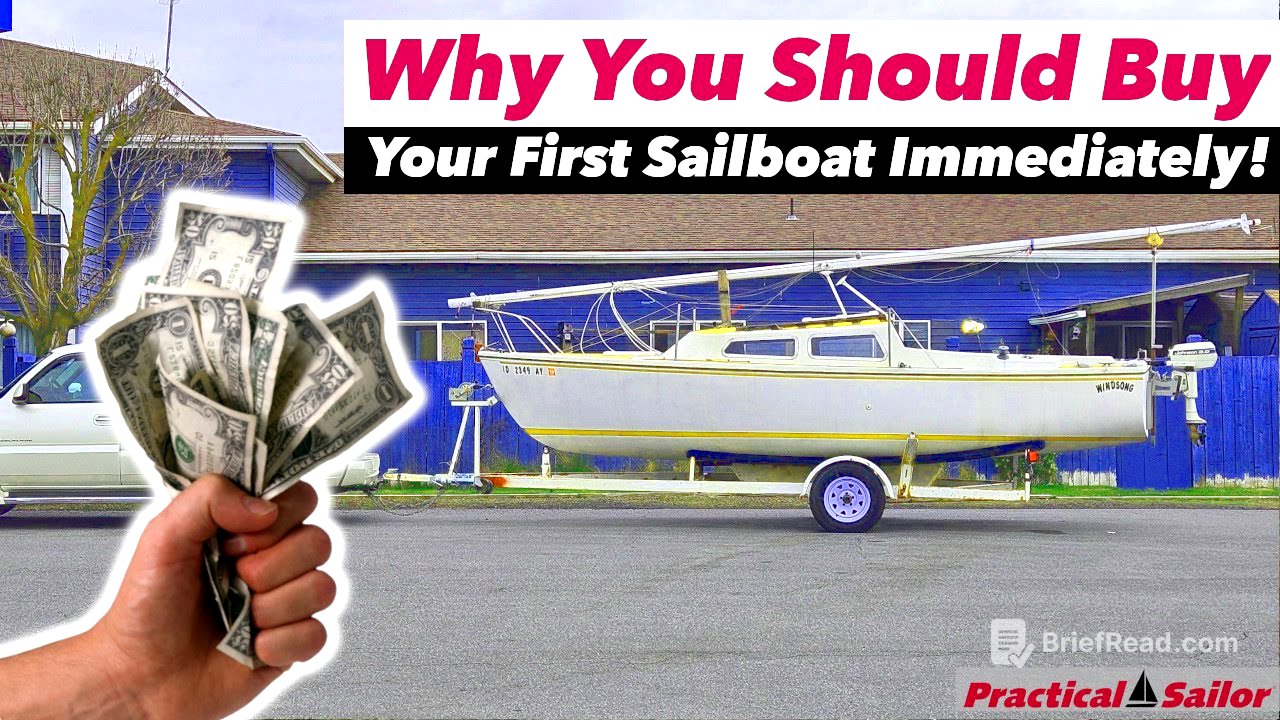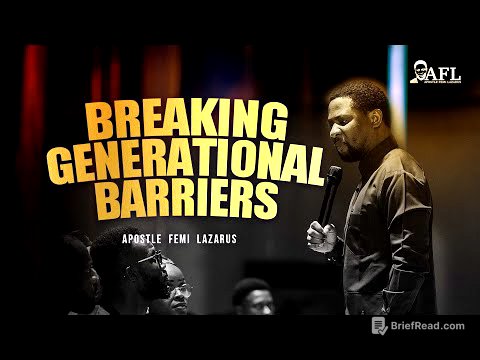TLDR;
This video addresses the top 10 most frequently asked questions about sailing, covering topics such as the difficulty of learning to sail, licensing requirements, costs associated with boat ownership, the possibility of living aboard, and what to do when the wind dies. It also discusses safety, sleeping arrangements on long trips, how to handle storms, and whether sailing is only for the wealthy. The video aims to provide a clear understanding of the sailing lifestyle and whether it's a good fit for the viewer.
- Sailing is not hard to learn the basics, but mastering it takes time and experience.
- A license is not typically required for sailing in North America, but certifications are often needed in Europe and for chartering.
- The real cost of owning a sailboat is in maintenance, dock fees, and upgrades, not just the initial purchase.
- Living aboard a sailboat offers freedom and adventure but also involves challenges like tight spaces and constant chores.
- Sailing can be safe if approached with respect for the ocean, proper preparation, and the right safety equipment.
- Sailing the world is possible without being rich by buying used boats, doing your own repairs, and living simply.
Is Sailing Hard? [0:44]
Sailing is compared to riding a bike on a moving road, with the wind as the engine and many ropes to manage. The basics of steering, sail trimming, tacking, and jibing can be learned in a weekend, and most sailing schools can get you cruising confidently after a few lessons. However, mastering sailing, like learning a language, takes years of practice to understand racing tactics and offshore passage making. Sailing itself is not hard, but it is a continuous learning experience that requires enjoyment to fully appreciate. Those who are mechanically minded, enjoy taking things apart, are competitive, or like aeroplanes or motorcycles are more likely to enjoy sailing.
Do You Need a License to Sail? [1:59]
In most of North America, a license is not required to sail your own boat, which may seem surprising. However, in Europe and other parts of the world, certifications like ICC or RYA are necessary. Charter companies often require proof of competence, such as ASA or RYA certificates. While a license isn't technically mandatory, taking a class is highly recommended for safety and crew satisfaction. For a low-commitment way to learn, a Sunfish can be used without a license.
How Much Does a Sailboat Cost? [2:52]
The cost of owning a sailboat can vary widely, from the price of a secondhand car to that of a private jet. A small 22-foot boat can be found for under £8,000, while a solid 35-foot boat for coastal cruising might cost between £24,000 to £56,000. Luxury catamarans can exceed £800,000. The real cost lies in maintenance, dock fees, insurance, upgrades, and ongoing purchases. Budgeting around 10% of the boat's value per year for upkeep is a good rule of thumb. Alternatives to ownership include crewing on other boats, joining a sailing club, or chartering. DIY skills in wiring, plumbing, and engine repair can significantly reduce costs, potentially saving hundreds of pounds per hour compared to boatyard rates.
Can You Live on a Sailboat? [4:18]
Living aboard a sailboat offers freedom, adventure, and scenic views, but it also presents challenges such as tight quarters, constant chores, and frequent repairs in various locations. Showers may be taken in marinas or with a bucket, and groceries must be carried long distances. Privacy can be limited, requiring close relationships with fellow occupants. While not always glamorous, boat life is ideal for those who prioritise freedom over comfort.
What's the Best Boat to Start With? [5:03]
Starting with a small, simple dinghy like a Laser, Sunfish, or Hobie Cat is recommended for learning, as mistakes happen quickly and provide immediate feedback on wind effects. Capsizing is also part of the learning experience. For weekend cruising, a 25-30 foot monohull is a good balance of affordability and manageability, and is forgiving for beginners. The Catalina 22 is a popular small keelboat. It's best to buy a boat that allows you to start sailing now, rather than waiting for a dream boat in the future, as the only way to learn sailing is by doing it.
What Happens When the Wind Dies? [5:46]
When the wind dies, there are three options: use the engine, wait for the wind to return, or embrace the calm by reading, swimming, or relaxing. Calm days at sea can be peaceful, but it's important to be aware of drifting into shipping lanes, which would necessitate using the engine.
Is Sailing Safe? [6:21]
Sailing is statistically safer due to slower speeds, lower fuel consumption, and fewer thrill-seekers. However, safety depends more on the sailor than the boat. Bad weather, poor preparation, and ignoring forecasts can lead to trouble. Respect for the ocean, life jackets, radios, flares, and awareness of storms are crucial for safety. Sailing should be approached with humility, similar to mountain climbing.
How Do You Sleep on Long Sailing Trips? [6:57]
On long trips, crews use a watch system, with half the crew on deck while the other half sleeps, swapping every few hours. Solo sailors take 20-30 minute naps, using alarms, radar, wind vanes, or autopilots to maintain course. This is likened to parenting a newborn, with the boat as a large, potentially dangerous baby. Despite the challenges, solo sailing is possible, but expect limited sleep.
What Happens in a Storm? [7:33]
In a storm, the initial reaction might be panic, but it's important to take action. Sailors reduce sail, use storm sails, or heave to, which is like putting the boat in neutral. Offshore boats use drogues or sea anchors for stability. Most storms are not as dramatic as depicted in films, but are still wet and uncomfortable. Preparation, knowledge of the boat, necessary gear, and respect for the forecast are essential for turning a scary night into a manageable experience.
Do You Need to Be Rich to Sail the World? [8:11]
It's a myth that you need to be rich to sail the world. While a luxury yacht requires significant wealth, regular people can sail the world on affordable, used boats. The key is to buy used, do your own repairs, and live simply. The sea values skill over extravagance. Resourcefulness and a willingness to trade luxury for adventure are more important than financial wealth. Many solo sailors live without luxuries like refrigerators and are content with a life of travel, meeting new people, and exploring wherever the wind takes them.









